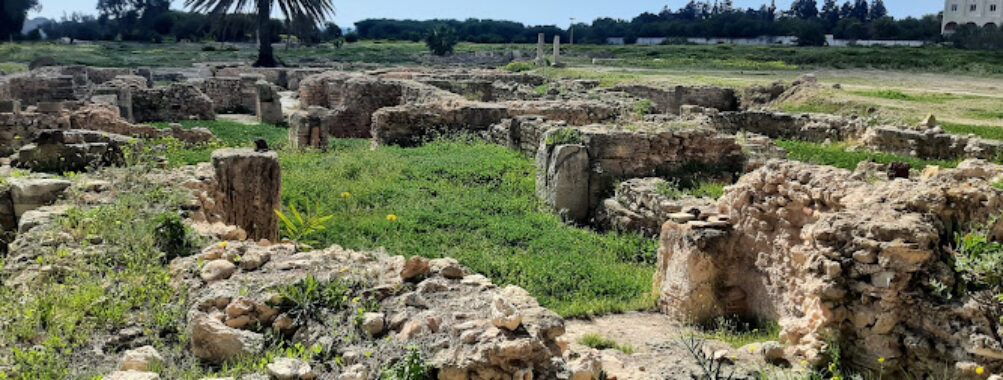
The Archaeological site of Pupput
Table of Contents
Description
The Archaeological Site of Pupput offers a fascinating glimpse into the ancient Roman world, tucked away in a spot that many travelers might overlook but definitely shouldn’t. When you wander through Pupput, you’re stepping into a place where history whispers from every cracked column and weathered stone. The site is best known for its necropolis remains—ancient Roman burial grounds that tell stories of lives long past. But Pupput isn’t just about the graves. You’ll also find standing columns that have stubbornly resisted time, and the outlines of homes that once bustled with daily life. It’s like a giant jigsaw puzzle of Roman life, still waiting to be pieced together.
Now, I’m not gonna sugarcoat it—Pupput isn’t the glitziest or most polished archaeological site out there. It’s got its rough edges, and some parts are a bit weather-beaten, which honestly adds to its charm if you ask me. It’s a place where you can almost feel the dust of centuries and imagine the hustle and bustle of a Roman town. For those who love history but want to avoid the typical tourist crowds, Pupput feels like a secret waiting to be uncovered. It’s quiet, a little raw, and absolutely authentic.
What really struck me during my visit was the way the necropolis area is laid out. You don’t just see tombs; you get a sense of the rituals and respect the Romans had for their dead. And those standing columns? They’re like silent sentinels, reminders of architectural prowess that still stand tall despite the centuries. The remains of homes give you a peek into everyday Roman life—where families lived, worked, and dreamed. It’s a rare chance to connect with a world that’s both ancient and surprisingly relatable.
Key Features
- Extensive necropolis area showcasing ancient Roman burial practices
- Well-preserved standing columns that highlight Roman architectural skill
- Ruins of residential homes offering insight into Roman daily life
- Quiet, less crowded atmosphere perfect for reflective exploration
- On-site museum displaying artifacts and providing historical context
- Informative signage helping visitors piece together the site’s history
- Scenic surroundings that blend natural beauty with historical intrigue
Best Time to Visit
Timing your visit to Pupput can really make a difference in how you experience it. Spring and autumn are the sweet spots, with mild weather that makes wandering around ruins a pleasure rather than a sweat-fest. Summers can get pretty hot, and since much of the site is open-air with limited shade, you might find yourself rushing through instead of soaking it all in. Winters, on the other hand, can be a bit chilly and damp, which isn’t ideal for walking on uneven ancient paths.
One thing I learned the hard way is to avoid weekends and local holidays if you want some peace and quiet. Pupput isn’t exactly a bustling tourist hotspot, but it does attract local visitors during peak times, which can take away from the calm, immersive vibe. Early mornings are golden—soft light, fewer people, and that magical stillness that makes history come alive. Plus, if you’re a photography buff, that’s when the ruins look their absolute best.
How to Get There
Getting to Pupput is pretty straightforward, but it does require a bit of planning, especially if you’re not renting a car. The site is located near a coastal town, and the easiest way is usually by car or taxi from the nearest city or airport. If you’re like me and prefer public transport, there are buses that drop you off relatively close, but be prepared for a short walk on uneven terrain to reach the actual site.
For those who enjoy a bit of adventure, cycling can be a fantastic way to reach Pupput. The roads leading there offer some lovely views, and arriving on two wheels gives you the freedom to explore the surrounding area at your own pace. Just pack some sturdy shoes because once you’re there, you’ll want to roam around without worrying about slipping on loose stones.
Tips for Visiting
Alright, here’s the lowdown from someone who’s been there and done that: first off, wear comfortable shoes. The ground is uneven and can be a bit tricky in spots, so leave the flip-flops at home. Bring water and maybe a hat, especially if you’re visiting during the warmer months—shade is limited and the sun can be relentless.
Don’t rush. Pupput isn’t a place to tick off quickly. Give yourself at least a couple of hours to really soak it in. And if you’re a history nerd like me, consider hiring a local guide or grabbing an audio guide to get the full story behind the ruins. It’s amazing how much more vivid the site becomes when you know the tales behind the stones.
Also, keep in mind that the site is outdoors, so check the weather forecast before you head out. Rain can make some paths slippery and less enjoyable. Lastly, respect the site—these ruins have survived centuries and deserve to be treated with care. Stick to the marked paths and avoid touching delicate structures.
Visiting Pupput felt like stepping back in time, and if you’re up for a little history mixed with some quiet contemplation, it’s definitely worth the trip. Just remember to bring your curiosity and a sense of adventure—you’ll need both.
Location
Places to Stay Near The Archaeological site of Pupput
Find and Book a Tour
Explore More Travel Guides
No reviews found! Be the first to review!